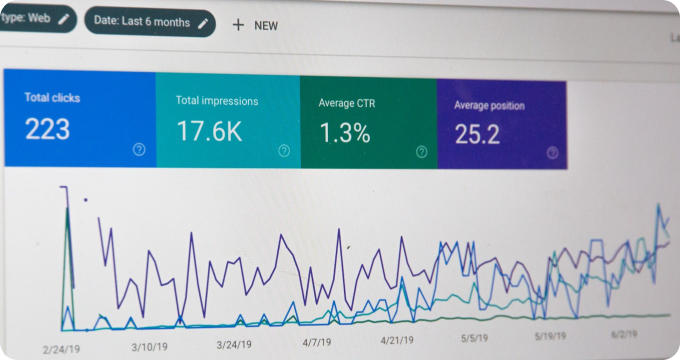Wrongful Death Lawyers Industry Report: Key Findings and Crucial Insights
- December 17, 2023
- 2 minutes
The field of Wrongful Death Law, like any other legal specialty, is in a state of constant flux, shaped and influenced by an intricate web of social, economic, and legislative factors. This article delves into the complex landscape of the Wrongful Death Lawyers industry, offering a comprehensive analysis of recent developments, key trends, and crucial insights gathered from an extensive review of industry data.
Wrongful death, as a concept, refers to a legal claim that is raised when a person's death is directly caused by the negligence, misconduct, or unlawful acts of another individual or entity. Such cases are distinct from criminal proceedings in that they seek to provide recompense to the decedent's surviving relatives or estate, rather than focusing on punishment for the defendant.
The essence of the wrongful death lawyers industry lies in its ability to leverage legal expertise to guide bereaved families through a labyrinth of complex regulations, thus ensuring that the liable parties are held accountable and that just compensation is delivered. It's a sector marked by fierce competition, as firms battle for market share in an environment where reputation, experience, and successful case outcomes are pivotal.
In recent years, the wrongful death industry has seen an interesting shift. Economic factors, particularly the gradual recovery from the 2008 financial crisis and subsequent economic downturns, have played a considerable role in this evolution. As economies stabilize, disposable incomes rise, allowing more individuals to afford legal representation - a circumstance that has undoubtedly contributed to increased demand for wrongful death lawyers.
Simultaneously, technological advancements have begun to reshape the industry. The proliferation of digital marketing channels has allowed firms to reach a broader audience, thus intensifying competition. Moreover, advancements in data analytics have equipped lawyers with powerful tools for case preparation. The ability to mine vast datasets for relevant information can uncover compelling evidence, thus potentially swaying case outcomes in favor of the plaintiff.
However, these technological innovations are not without their trade-offs. While the increased accessibility of legal services has broadened the market, it has also given rise to an emerging issue: the commoditization of legal services. As more firms are able to advertise their services to an extensive audience, there is a risk of reducing legal representation to a mere commodity, where the focus shifts from quality to quantity. This could potentially dilute the expertise that defines the industry, and thereby its overall efficacy.
The geographical distribution of wrongful death cases is another noteworthy trend. A statistical analysis reveals that states with higher population densities, such as California and New York, tend to generate more wrongful death cases. This could be attributed to various factors including higher accident rates in densely populated areas or the concentration of industries prone to negligence-related fatalities such as manufacturing or construction.
An interesting parallel can be drawn here with the Broken Windows Theory, a criminological theory postulating that visible signs of disorder and neglect in a community can lead to further crime and antisocial behavior. By extension, it could be argued that in regions characterized by high accident rates or negligent industries, there could be a perceived lack of accountability, leading to recurrence and, consequently, a higher demand for wrongful death lawyers.
From a legislative perspective, the industry is continually shaped by changing laws and regulations. For instance, caps on damages in wrongful death cases, imposed by some states in an attempt to control litigation costs, can significantly impact the potential recovery for plaintiffs and thereby the profitability for law firms.
In conclusion, the wrongful death lawyers industry is a dynamic and multifaceted field. Its trends and developments reflect a delicate balance between social, economic, technological, and legislative factors. As we look to the future, it is clear that the industry's evolution will continue to be influenced by these factors, making it incumbent upon practitioners to stay abreast of these changes, adapt, and innovate in order to maintain their competitive edge and deliver quality representation to their clients.
Learn More
Unearth the secrets of the legal world and empower yourself with knowledge by diving deeper into our enlightening blog posts about wrongful death lawyers. For those seeking top-tier legal representation, they are encouraged to explore our comprehensive rankings of the Top Wrongful Death Lawyers in Baltimore.
Popular Posts
-
 6 Reasons Why You Need a Wrongful Death Lawyer in Your Corner
6 Reasons Why You Need a Wrongful Death Lawyer in Your Corner
-
 The Future of Wrongful Death Lawyers: Predictions and Emerging Trends
The Future of Wrongful Death Lawyers: Predictions and Emerging Trends
-
 10 Things I Wish I'd Known About Wrongful Death Lawyers Before Hiring One
10 Things I Wish I'd Known About Wrongful Death Lawyers Before Hiring One
-
 What are Wrongful Death Lawyers and How Do They Operate?
What are Wrongful Death Lawyers and How Do They Operate?
-
 Ask These Questions to a Wrongful Death Lawyer to Choose the Right Advocate for Your Case
Ask These Questions to a Wrongful Death Lawyer to Choose the Right Advocate for Your Case






